Hi there, pet lovers! 🦎
Jackson’s Chameleons (Trioceros jacksonii) are among the most fascinating and unique reptiles in the pet trade. Known for their striking appearance, including three prominent horns and independently moving eyes, these chameleons are often compared to miniature tree-dwelling Triceratops. While they are captivating pets, they are not for everyone. Their care requirements are specific, and they thrive best under the care of experienced reptile keepers. In this detailed review, we’ll explore everything you need to know about Jackson’s Chameleons, from their temperament and care needs to their availability and cost. Whether you’re considering adding one to your family or simply curious about these remarkable creatures, this guide will help you make an informed decision.
Overview
Jackson’s Chameleons are small to medium-sized arboreal lizards native to East Africa, particularly Kenya and Tanzania. They are known for their distinctive horns, prehensile tails, and mitten-like hands, which make them excellent climbers. Here’s a quick summary of what makes them stand out:
- Handling and Temperament: Generally calm but can stress easily; best suited for minimal handling.
- Care and Maintenance: High-maintenance, requiring specific humidity, temperature, and lighting conditions.
- Health and Durability: Sensitive to environmental changes; males tend to live longer than females.
- Availability: Widely available through breeders, pet stores, and reptile expos.
- Cost: Moderate initial and ongoing costs, with expenses for enclosures, lighting, and feeders.
- Overall: A rewarding pet for experienced reptile enthusiasts but not recommended for beginners.
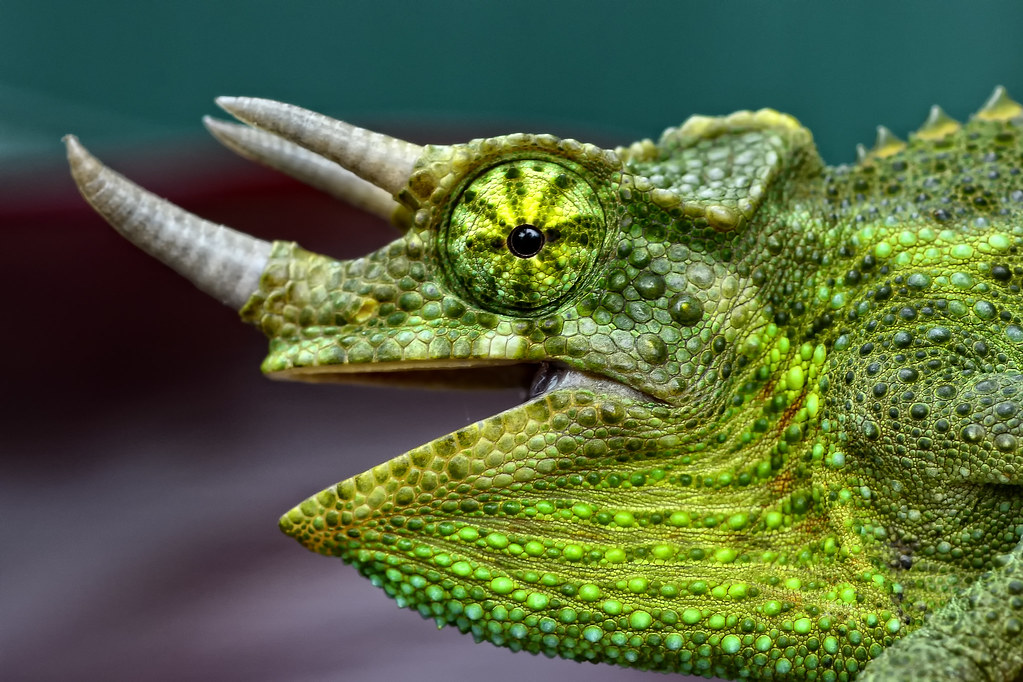
Why Choose a Jackson’s Chameleon?
Jackson’s Chameleons are ideal for those looking for a unique, visually stunning, and interactive pet. Their prehistoric appearance, with three horns and independently moving eyes, makes them a standout addition to any reptile collection. They are relatively small compared to other chameleon species, making them more manageable in terms of space requirements. However, their care is demanding, and they are best suited for experienced keepers who can meet their specific needs.
Handling and Temperament
Jackson’s Chameleons are among the more handleable chameleon species, but they are still not pets that enjoy frequent interaction. They are generally calm and slow-moving, which makes them easier to handle compared to other chameleons. However, they can become stressed if handled too often or for extended periods.
Personality Variations
- Jackson’s Chameleons are typically docile and not prone to biting. If they do bite, it’s more of a light pinch than anything painful.
- They are not social animals and prefer to be left alone most of the time. Overhandling can lead to stress, which can negatively impact their health.
Handling Tips
- Handle them gently and infrequently. Short, occasional handling sessions are best.
- Avoid handling them during shedding or when they appear stressed.
- Be mindful of their prehensile tail, which they use to grip branches and your hand. Unlike some lizards, they do not drop their tails, so there’s no risk of tail loss.
Biting
- Bites are rare and usually occur only if the chameleon feels threatened. Their bites are not dangerous and rarely break the skin.
Overall, Jackson’s Chameleons are best appreciated as display animals rather than hands-on pets. Their calm demeanor makes them enjoyable to observe, but their sensitivity to stress means handling should be kept to a minimum.
Care and Maintenance
Jackson’s Chameleons are high-maintenance pets that require specific environmental conditions to thrive. Their care involves creating a habitat that mimics their natural arboreal environment, maintaining proper humidity and temperature levels, and providing a varied diet.
Enclosure Setup
- Size: A tall, well-ventilated screen enclosure is essential. A minimum size of 24” x 24” x 48” is recommended for an adult.
- Climbing Space: Being arboreal, they need plenty of vertical space with branches, vines, and foliage for climbing.
- Substrate: Use a substrate that retains moisture, such as coconut fiber or sphagnum moss, to help maintain humidity.
- Hiding Spots: Provide plenty of live or artificial plants to create hiding spots and reduce stress.
Humidity and Temperature
- Humidity: Jackson’s Chameleons require moderate to high humidity levels (50-80%). Regular misting and a drip system are essential to maintain proper humidity and provide drinking water.
- Temperature: They thrive at cooler temperatures compared to other chameleons. Daytime temperatures should range from 70-80°F, with a basking spot of 85°F. Nighttime temperatures can drop to 60-65°F.
Feeding
- Diet: Jackson’s Chameleons are insectivores and require a varied diet of live insects, such as crickets, dubia roaches, and hornworms.
- Supplements: Dust insects with calcium and vitamin D3 supplements to prevent nutritional deficiencies.
- Feeding Schedule: Feed adults every other day, while juveniles should be fed daily.
Lighting
- Jackson’s Chameleons require both UVA and UVB lighting to support their metabolism and overall health. UVB bulbs should be replaced every 6-12 months to ensure effectiveness.
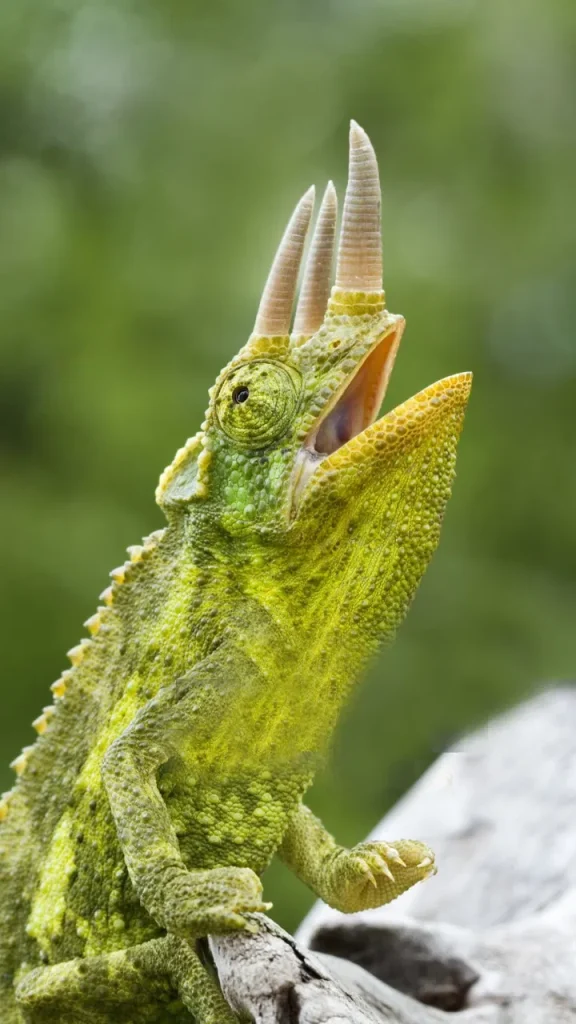
Health and Durability
Jackson’s Chameleons are sensitive reptiles that require precise care to remain healthy. Even minor husbandry errors can lead to health issues, making them a challenging pet for beginners.
Common Health Issues
- Respiratory Infections: Caused by incorrect humidity levels or poor ventilation.
- Dehydration: Occurs if humidity levels are too low or if the chameleon is not drinking enough.
- Metabolic Bone Disease: Caused by insufficient UVB lighting or calcium supplementation.
Preventative Care
- Maintain proper humidity and temperature levels.
- Provide a balanced diet with regular supplementation.
- Handle them gently and infrequently to minimize stress.
Males tend to live longer than females, with lifespans of up to 10 years. Females, due to the energy demands of reproduction, generally have shorter lifespans. Jackson’s Chameleons are livebearers, meaning they give birth to live young rather than laying eggs.
Availability and Cost
Jackson’s Chameleons are relatively easy to find compared to other chameleon species. They are available through reputable breeders, pet stores, and online reptile sellers. Wild-caught individuals are sometimes imported from non-native populations in Hawaii and Florida, but captive-bred specimens are preferred for their better health and adaptability.
Cost
- Initial Cost: The cost of a Jackson’s Chameleon ranges from $100 to $300, depending on the morph and source.
- Setup Cost: A proper enclosure, lighting, and accessories can cost between $200 to $500.
- Ongoing Costs: Regular expenses include live insects, supplements, and UVB bulb replacements.
Pros and Cons
Pros
- Unique and striking appearance.
- Relatively calm and handleable compared to other chameleons.
- Fascinating behaviors, such as independent eye movement and prehensile tail use.
Cons
- High-maintenance care requirements.
- Sensitive to environmental changes.
- Not suitable for beginners or those unable to commit to daily care.
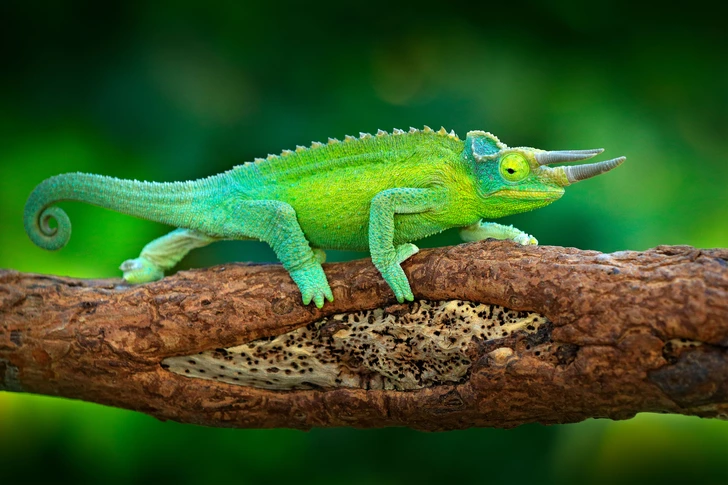
Final Thoughts
Jackson’s Chameleons are captivating pets that offer a unique and rewarding experience for experienced reptile keepers. Their prehistoric appearance and fascinating behaviors make them a standout addition to any collection. However, their care demands and sensitivity to environmental changes mean they are best suited for those with prior reptile-keeping experience. If you’re prepared to meet their needs, a Jackson’s Chameleon can be a truly remarkable companion.
Have you owned a Jackson’s Chameleon? Share your experiences and tips in the comments below! We’d love to hear how you care for your chameleon and what makes them special to you.
For more reptile care tips and reviews, stay tuned to our blog and don’t forget to subscribe to our newsletter! 🦎

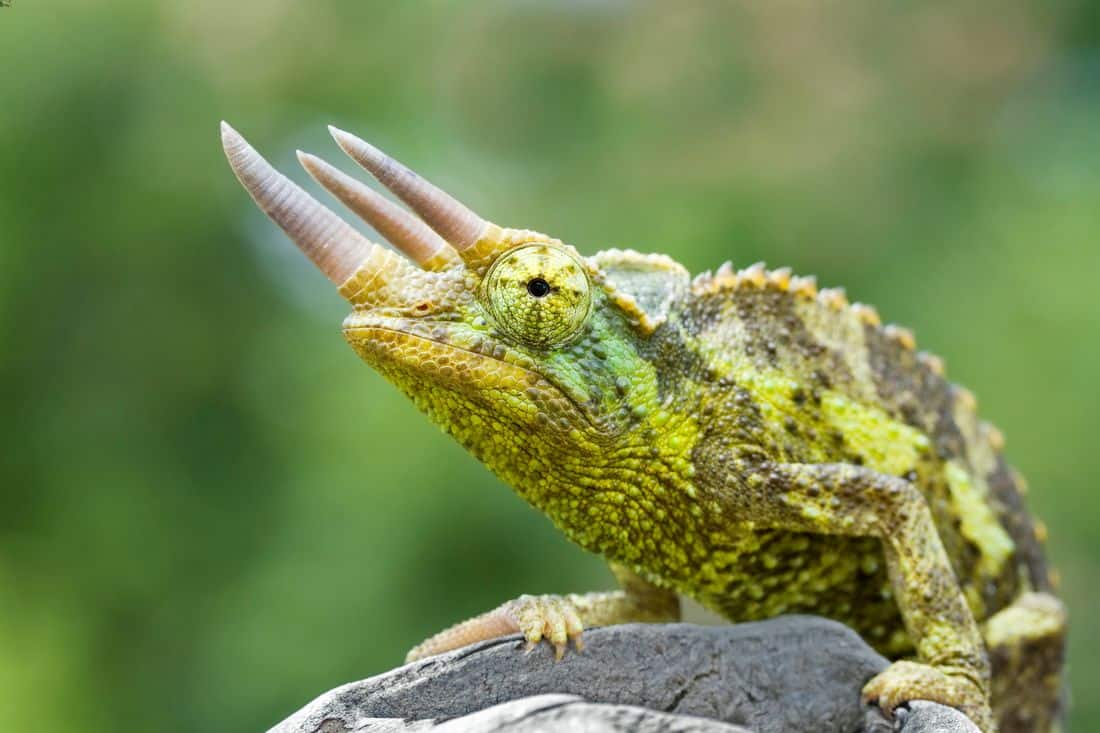

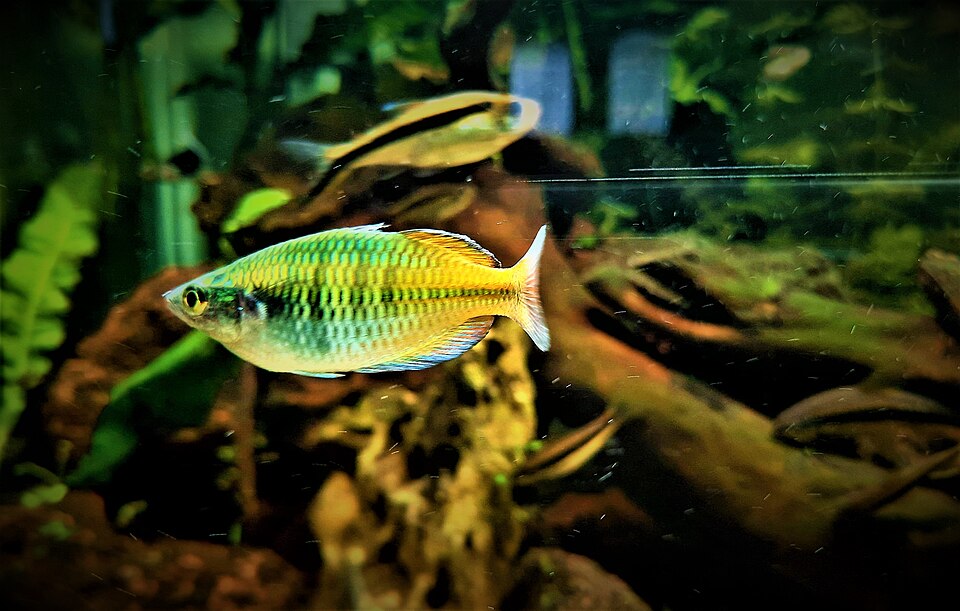
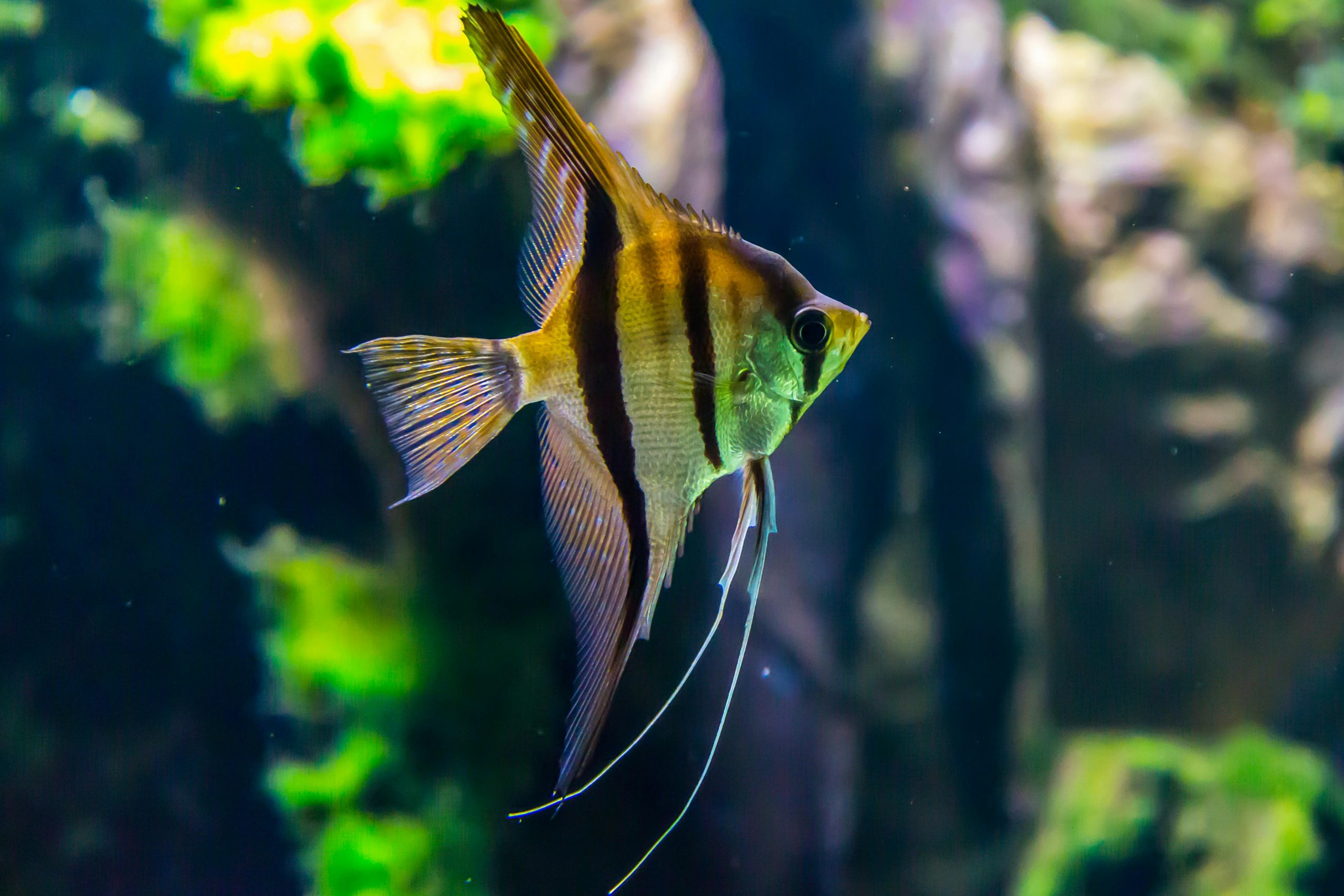
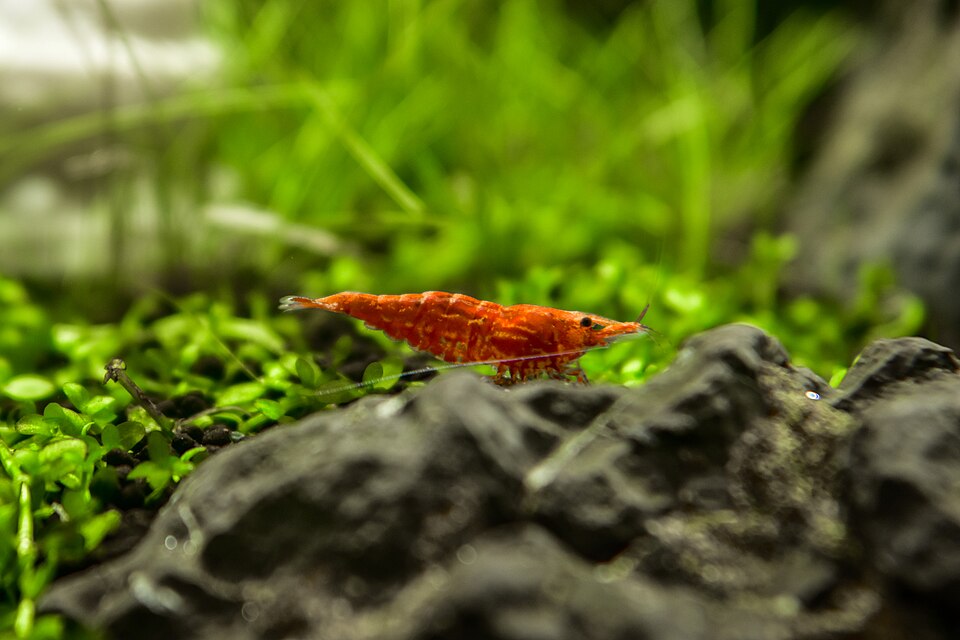

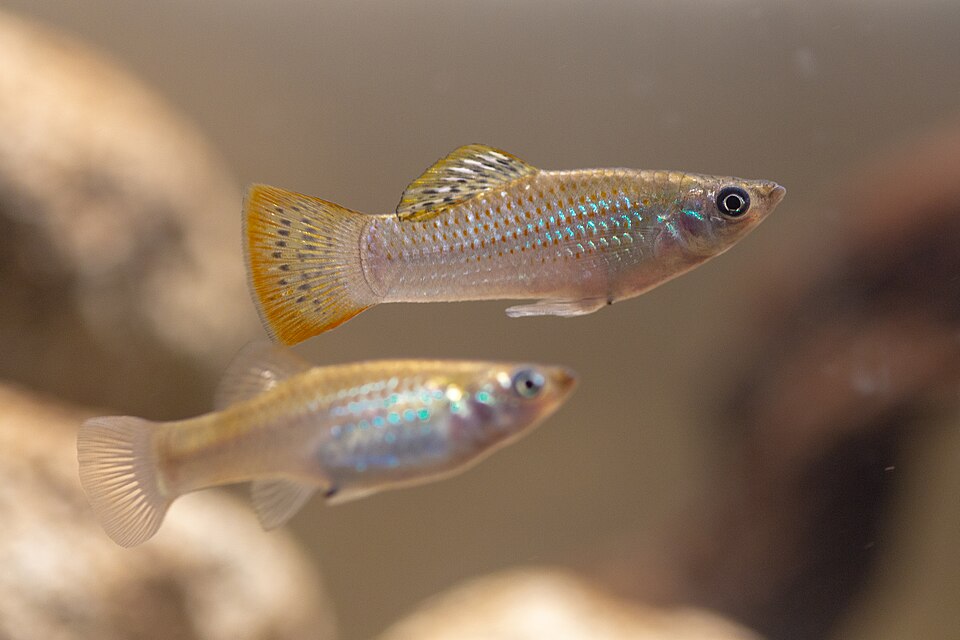
Leave a Reply